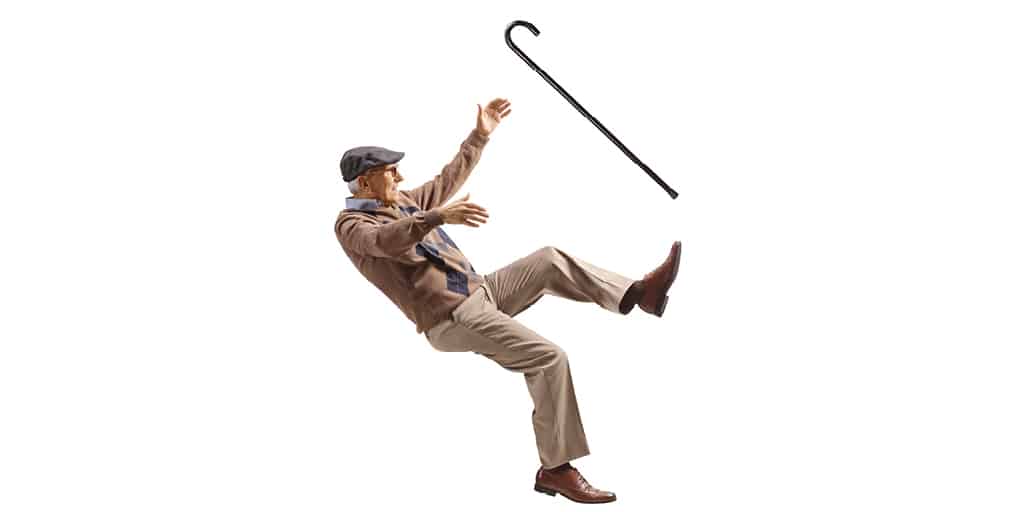How to Avoid Falls: Steps for Staying Safe and On Your Feet

Falling is a serious health risk for older adults. According to the CDC, 1 in 4 individuals over the age of 65 report falling each year, which equates to 14 million older adults in the US alone. These falls can lead to serious injury, hospitalization, or even long-term disabilities. In fact, AARP notes that hip fractures are a leading cause of fall-related deaths among adults 65 and older. If you or someone you know is in the later years of life, it is important to note these sobering outcomes of falling.
The good news? Falls are very preventable! Here are some tips to reduce the risk of falling to keep yourself or a loved one safe and steady:
1. Stay Active to Stay Upright
Movement is key when it comes to preventing falls. Certain types of physical activities can boost strength, balance, and endurance (three key areas for fall prevention).
- Strength – Strong muscles (especially core and legs). Try exercises that mimic everyday activities, like rising up from a chair, resistance training using your own body weight, or lightweight dumbbells.
- Balance – Staying grounded. Trying gentle, low-impact exercises like yoga, Tai Chi, or Pilates.
- Endurance – Stamina. Activities such as water aerobics, walking, or cycling build endurance and help build confidence with movement.
2. Keep Up with Check-Ups
See your primary care physician regularly; they can provide professional medical insight about changes that may affect falls such as:
- Personal risk awareness: Knowing your individual risk factors, such as an underlying chronic condition, is critical in helping you stay ahead of potential issues.
- Medication symptoms: Some medications can cause dizziness, lightheadedness, or muscle weakness, so it is important to be aware of these side effects.
- Vision checks: Poor vision can make it harder to detect tripping hazards. Stay on top of vision changes with annual screenings.
3. Declutter Your Space
Even small changes in your living space can have a huge impact in fall prevention.
- Clear walkways of cords, clutter, or low-lying objects
- Secure or remove loose rugs
- Fix uneven flooring or loose tiles
- Use non-slip mats in the bathroom and shower
- Keep everyday items within reach to prevent stretching or climbing
4. Prioritize Better Sleep
Poor sleep doesn’t just leave you groggy or in a bad mood, it can also affect balance, coordination, and focus.
To get better rest:
- Set a regular sleep routine (for example, go to bed and wake up at the same time every day)
- Wind down with calming activities (such as reading or meditation)
- Limit screen time before bed
- Make your bedroom a quiet, dark, and cool environment
5. Light The Way
It’s easy to trip over or miss a step when you can’t see it in the middle of the night. Make sure your home is well lit.
- Use night lights in hallways, bedrooms, and bathrooms
- Keep a lamp within reach of your bed
- Install brighter bulbs in darker areas of the house or in stairways
6. Don’t Be Afraid of Assistive Devices
Using assistive devices isn’t a sign of weakness; instead, it’s a proactive way to maintain your independence. If your doctor recommends to use a cane or walker, embrace it!
Other helpful aids can include:
- Grab bars in the shower or tub
- Handrails on the side of stairways
- Raised toilet seats or arm supports
At Kavod Senior Life, our Facilities Team provides tub cut outs, grab bars, shower conversions and other assistive supports to help residents prevent falls. In Assisted Living, we offer staff escorting to help individuals move easily to places they want to go, such as the hair salon, dining room or on-campus concert! Our apartments all have pull cords and a check-in system to make sure anyone who may fall can get immediate help.
Overall, falls do not have to be an automatic part of aging. With a few mindful habits, regular check-ins, and a safer-living environment you or a loved one can continue living and enjoying life in confidence.
References:
https://www.mayoclinic.org/healthy-lifestyle/healthy-aging/in-depth/fall-prevention/art-20047358
https://www.healthline.com/health/fall-prevention
https://www.cdc.gov/falls/data-research/index.html
Crafted with the help of Chat GPT
